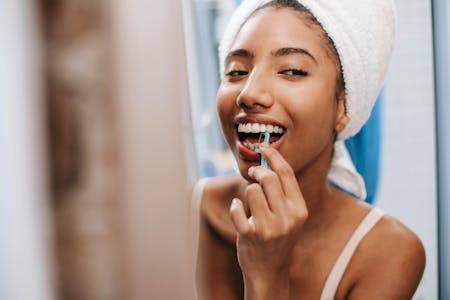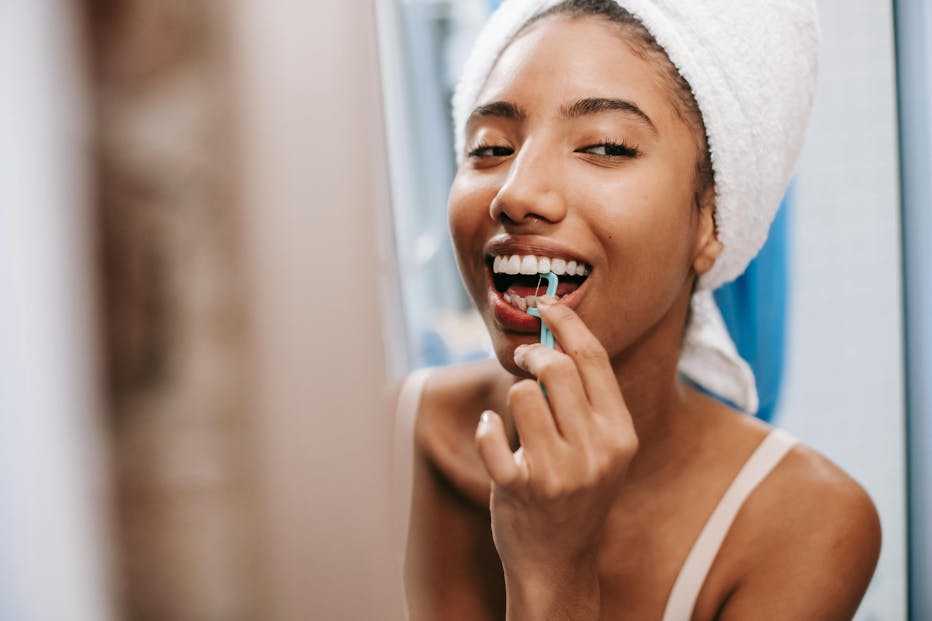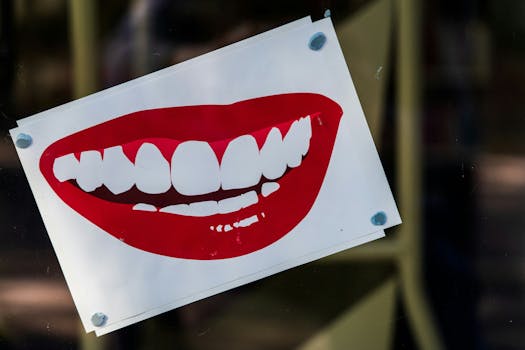An overview of teeth whitening
A bright white smile is often seen as a sign of health and self-confidence. If you also dream of brighter, whiter teeth, there are various bleaching methods and techniques that can help you achieve this goal. In this blog post, you will learn everything you need to know about teeth whitening - from the various bleaching methods to how to care for your teeth after treatment.



What is tooth whitening?
Teeth bleaching, also known as teeth whitening, is a cosmetic procedure that aims to visibly whiten your teeth and give you a radiant smile. The treatment aims to remove discolouration and stains caused by the daily consumption of food, drink and tobacco. These stains build up on the tooth surface and can penetrate deeper into the enamel, affecting the natural whiteness of your teeth.
How does teeth whitening work?
Bleaching works by applying bleaching agents that are specially formulated to break down the molecular bonds of the colour pigments that cause discolouration. These bleaching agents, often based on hydrogen peroxide or carbamide peroxide, penetrate the porous layers of tooth enamel and initiate a chemical reaction that lightens the teeth. This process may require several applications, depending on the desired degree of whitening and the condition of the teeth.
Important considerations for teeth whitening
There are various factors to consider when deciding in favour of teeth whitening. Firstly, the health of your teeth and gums is crucial. People with cavities, gum disease or sensitive teeth should seek dental advice before starting treatment. It is also important to understand that bleaching does not affect restorations such as fillings, crowns or veneers and these may differ in colour from the natural teeth after a bleaching treatment.
The importance of aftercare after teeth whitening
Caring for your teeth after bleaching is crucial to achieving the desired result and maintaining brighter teeth in the long term. Maintaining a bright white smile requires not only immediate aftercare, but also an ongoing commitment to good oral hygiene and regular whitening appointments.
Basic care after bleaching
After professional teeth whitening, it is important to consistently practice your oral hygiene to maintain your lighter tooth colour and support your dental health. Regular brushing with a fluoride toothpaste helps to keep teeth clean and free of plaque, while flossing helps to remove food debris and plaque from between the teeth. These practices are essential to prevent the build-up of pigments that can lead to discolouration.
Continuous bleaching treatments
In order to maintain the results of teeth whitening in the long term, regular refreshments are required. Bleaching is often not a one-off process, especially if you regularly consume stimulants that can lead to discoloured teeth, such as coffee, tea, red wine and tobacco. The colour pigments from these substances can slowly build up on the tooth surface and discolour the teeth again. Regular bleaching sessions, tailored to your individual needs and the recommendations of dental professionals, can help to eliminate pigments and tooth discolouration and ensure bright white teeth.
Professional dental cleanings
Regular dental cleanings and oral health checks are essential to monitor the integrity of your teeth after bleaching. These examinations allow dental professionals to check the health of your enamel, tooth necks and dentin. This keeps your dental care at its best and allows you to enjoy healthy teeth.
Dealing with sensitivity and discolouration
After bleaching, some people may experience increased sensitivity. In this case, use special toothpastes for sensitive teeth and talk to your dentist about ways to treat these sensitivities. It is also important to monitor the reaction of your teeth to the whitening gel. If undesirable reactions occur, it is important to take this into account in future treatments in order to make the bleaching gentle and safe.
Professional bleaching methods
In-office bleaching at ALPINE WHITE
In-office bleaching at ALPINE WHITE offers you a safe and highly effective way to whiten your teeth professionally. Our unique tooth whitening process does not use any peroxides, which minimises the risk of tooth sensitivity and gum irritation. Your tooth structure is also not jeopardised. This gentle yet effective method is carried out under the strict supervision of dental professionals in our Studios and is ideal for people with sensitive teeth or those who value health-conscious treatment. With ALPINE WHITE, you can achieve a natural, healthy-looking white smile in a short space of time, improving your overall appearance.
Power Bleaching
Power bleaching is a more intensive form of bleaching that is characterised by the use of highly concentrated bleaching agents. This method is often combined with special light sources such as lasers or UV lamps to intensify the activity of the bleaching agent and achieve faster and deeper whitening of the teeth. Power bleaching is particularly suitable for people who want visible results quickly and are prepared to accept a slightly more aggressive treatment method for this effectiveness. Clearly visible changes in tooth colour can be achieved in one session, making this method a popular choice for quick aesthetic improvements.
Professional home bleaching
This is in contrast to professional home bleaching, which often involves a dental hygienist making a customised tray for you to use at home with a less concentrated bleaching gel. This method allows you to do the treatment at your own pace and requires more time and patience, but can deliver great results over a longer period of time.
While trays are a common method for home whitening, many dental practices and dental hygiene clinics also offer alternative home whitening options, such as whitening strips or special whitening toothpastes. These products are ideal for those looking for a practical solution to gently whiten their teeth. They offer an effective way to care for and maintain teeth between professional whitening sessions.
Possible risks and side effects
Although teeth whitening is a relatively safe procedure, some people may experience hypersensitivity of the teeth or slight irritation of the gums. These symptoms are usually temporary. If they persist, it is advisable to consult a specialist. Furthermore, bleaching is not suitable for everyone - for example, people with veneers, crowns or very dark discolouration who may need other dental treatments.
With ALPINE WHITE bleaching, however, there is no need to worry about side effects as it is peroxide-free.
Conclusion
Whether you opt for quick in-office bleaching or the more convenient method of home bleaching, it is important that you obtain thorough information and advice in advance. At ALPINE WHITE, we offer professional advice so that you can choose the right bleaching procedure for you and make your journey to a white smile as pleasant and successful as possible. After reading this blog post, you may want to book an appointment at one of our studios in Switzerland, for example in Zurich.


